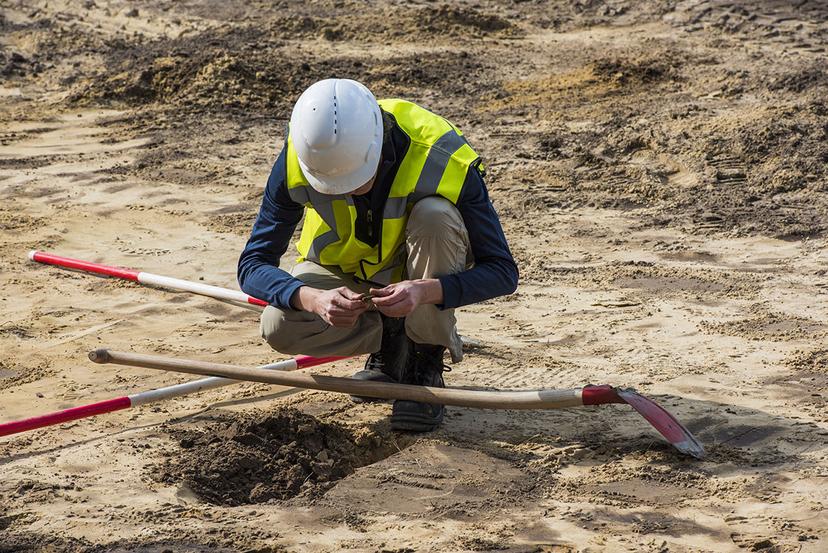Earth Sciences

Background
Curiosity about the physical world inspired the development of the earth sciences, sometimes called geosciences. The earth sciences include geography, geology, geophysics, meteorology, and oceanography.
Geography dates to the dawn of history, when investigations and explanations of the world first began. In ancient Greece, Aristotle had the audacity to suggest that the Earth was round instead of flat. He wrote about natural science, including marine life. Eratosthenes calculated the circumference of the Earth with remarkable accuracy and developed the concepts of latitude and longitude. Early advances in all of the earth sciences were also made by the Chinese, Egyptians, Arabs, Romans, and others. They speculated about the origin of the Earth, the causes of earthquakes and volcanic eruptions, and the nature of fossils. Early weather prophets predicted the weather by such signs as the behavior of birds, insects, or other animals.
During the Middle Ages, most geographic ideas of the ancient world, including that of the spherical shape of the earth, were lost by Europeans. Ocean study was hampered by fear of rumored monsters and of the unknown, and by technical difficulties in navigation.
Fear gave way to curiosity, however, and the travels of Marco Polo, Dias, Columbus, da Gama, Magellan, and Hudson yielded new maps and a greater knowledge of the world. Their voyages were primarily made for geographic discoveries and for trade and colonization. Along the way, however, they gathered information on currents, sea ice, and other physical and biological phenomena.
The invention of the thermometer (1593) and the barometer (1643) made scientific weather forecasting possible. The relationship between air pressure and weather was recognized, and by 1670 some barometers were marked "fair" and "rain." An important early work in geology was written in the late 1600s by Nicolaus Steno of Denmark. His work describes several principles of physical and historical geology and presents the view that fossils are the remnants of once-living creatures.
During the 17th and 18th centuries, many European naturalists explained the presence of marine fossils in mountain rocks in terms of catastrophes, such as the biblical flood. In the late 1700s, James Hutton, a Scottish geologist, developed the theory that the surface of the Earth undergoes continual, gradual change as the result of a number of natural processes, some that break down rock and wear down the land and others that form new layers of rock and build the land back up. In the early 1800s, William Smith, a British canal engineer, demonstrated that fossils are the key to studying and matching layers of rock of different regions.
Sir Charles Lyell's Principles of Geology, published in 1830, was influential in the development of modern geology. He opposed the idea that catastrophes accounted for geologic events. He showed that the higher a fossil is found in the rock sequence, the more it resembles living types.
In 1840, Sir James Clark Ross successfully sounded the bottom of the south Atlantic to 16,063 feet, using a crude hemp line and a lead weight. Darwin's Beagle expedition (1831–1836) and the Challenger venture (1872–1876) revealed much information about the ocean bottom and undersea life.
Early in the 19th century, scientists began to collect international weather observations. The invention of the telegraph made it possible to gather weather information quickly from a wide area, and weather services were established in a number of countries.
The earth sciences have been further developed and refined by 20th century advances in tools and technology. Scuba gear, manned submersible units, cameras, radar, and infrared sensors help oceanographers study the ocean's effect on climate, life in the ocean, and the evolution of the ocean floor. Radar, weather satellites, and computers allow meteorologists to forecast weather, track storms, and process large amounts of weather data. Geologists use sophisticated computer models to study plate tectonics and seismographs to determine the depth and formation of rocks below the earth's surface. Geographers and other earth sciences professionals use geographic information systems technology to map, manipulate, store, and selectively retrieve geographic data. This data can be used in a variety of areas, including business, the study of disease outbreaks and epidemics, environmental planning, and natural resource management.
The practical aspects of earth sciences received great emphasis in the 20th century, particularly in the mining and petroleum industries and in the construction of tunnels, dams, and roads. In the 21st century, the need for more efficient energy sources, environmental protection, and responsible land and water management has led to a continued heavy focus on the earth sciences. The need for well-trained geoscientists to address growing issues of concern such as energy conservation and management, environmental protection and remediation, and developing renewable energy sources is growing at a rapid rate. New technologies, such as biotechnology and nanotechnology, are just part of the answer. According to the American Geosciences Institute, as more geoscientists retire there will not be enough educated scientists available to take their place, creating a shortage that is expected to exist through the late 2020s.
